We were excited to have some friends visit us this week! Maddy, the Walder Turtle vet student, joined us in Lake County to help us trap and track. We have ten telemetered turtles at one of our sites, and we sample them each once a month. This helps us see how their bloodwork changes over a month and can indicate changes in stress, infection, inflammation, or disease status. We sampled these turtles a month ago this week, so it was time to track and sample everyone again!
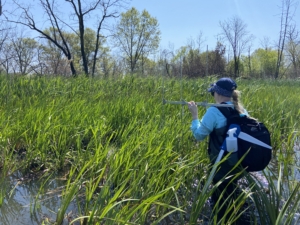
Maddy tracking a turtle using radio telemetry
To find them, we used radio telemetry. Each of the adult turtles is fitted with a transmitter attached to their shell. These transmitters emit a beeping sound that, when picked up by our receivers, leads us to the turtle. The search is like a game of “hotter, colder” that I used to play when I was young. When we get closer to the turtle, the beeping is louder. When we get further away, the beeping gets quieter. When we get close enough, we can even determine the direction of the turtle based on which way you hold the antenna. For example, if the turtle is north of me, the beep will be louder when I hold the antenna to the north and quieter when I hold the antenna to the south. By listening closely, we can determine which direction the turtle is. Eventually, the beeping will be loudest when pointing straight down towards the land or water, which lets us know the turtle is nearby and we do not need to continue walking. The radio does a great job of telling us where the turtle is before we roll up our sleeves and dig around in the water, plants, and mud. We’ll feel a turtle shell, and pick ‘em up!
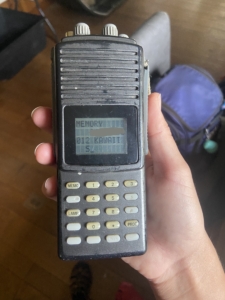
This method is wonderful and we wouldn’t be able to find the same turtles without it! In the field, however, we can run into some obstacles. The beeping can bounce off hills, trees, and buildings which can make it sound like the turtle is in a different direction than it is. Turtles in the water will also swim away from you and can take you on a wild goose chase. At times, the water is opaque, which means we might be feeling around blindly for several minutes while the turtle dodges us. They have good instincts to avoid predators!
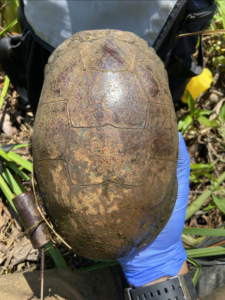
An adult Blanding’s with a telemeter on the back left of her shell
Thank goodness for telemetry making it easier to find these turtles! Here’s where the receiver brought me once. Do you see the turtle? Imagine trying to find him without being brought to the exact location!
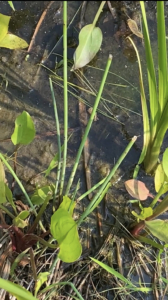
Can you find the turtle? Answer is circled below
Find the turtle answer!
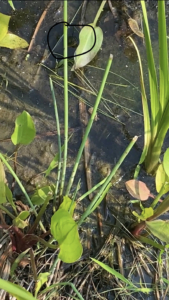
Did you find her?
Until next time!
Marg
